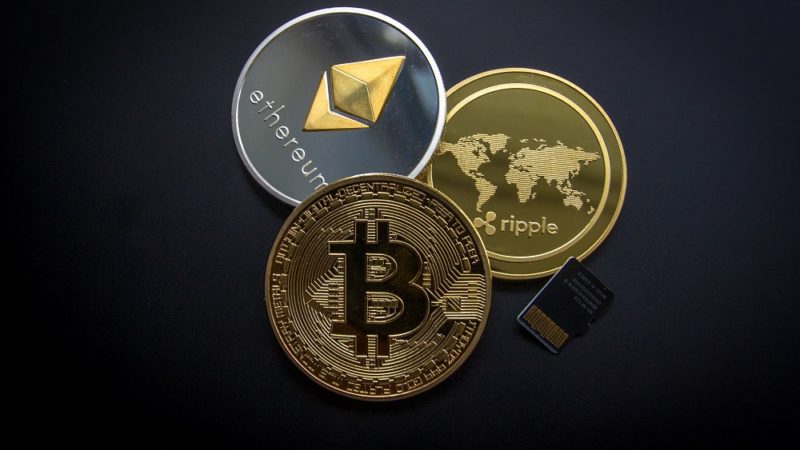HOW TO SET UP A BITCOIN MINER

There are basically three main types of bitcoin mining hardware, each more expensive and more potent than the previous. The following guide to set up a bitcoin miner explains each of the categories and also discusses how to make them function.
The first thing is to decide on suitable hardware; two main elements are needed to be considered, to do so.
- Hash Rate
Hash rate is determined by the number of calculations your hardware can accomplish each second as it intends to crack the mathematical puzzle. Hash rates are being measured in megahashes (MH), gigahashes (GH), as well as terahashes (TH) per second. The higher the hash rate, the higher you have chances to solve a transaction block.
- Energy Exhaustion
All the computing power being used at the time of mining consumes a lot of electricity, and that costs a significant amount of money. It’s essential to consider your hardware’s energy exhaustion in watts while making your choice. You have to be ensured that you don’t end up giving all of your money on electricity needed to mine coins that will not be worth what you have paid.
That’s why we use these two factors together to choose perfect hardware. You need to analyze how many hashes you are going to get for every watt of electricity you have used. To do this appropriately, just divide the hash count by the number of watts.
In some of the cases, you will have to use your computer/system to run the mining hardware. Your system has its own electricity consumption on top of the mining hardware, and you will have to factor that while calculating.
BITCOIN MINING HARDWARE
There are especially three main hardware categories that are being used by bitcoin miners; GPUs, FPGAs, ASICs.
- CPU/GPU Mining
The category of bitcoin mining hardware that is the least powerful is your system itself. As explained theoretically, you may use your system’s CPU to mine bitcoins, but practically, it functions too slow as per modern standards.
You can amplify the hash rate of your bitcoin by including graphics hardware to your computer system. Graphics cards feature GPUs (graphical processing units). GPUs are generated for heavy mathematical lifting for them to calculate all the typical polygons required in high-end video games. This lets them perform well at the SHA hashing mathematics needed to solve transaction blocks.
The GPUs can be bought from two leading vendors: ATI and Nvidia. High-end cards used in the process of mining can cost a significant amount of dollars, but also provide you with a substantial advantage over CPU hashing. One of the positive things associated with GPUs is that they also provide you with open options. GPUs can be used with many cryptocurrencies except the bitcoin.
- FPGA Mining
A Field Programmable Gate Array is basically an integrated circuit produced to get configured after being made. This enables a mining hardware manufacturer to purchase the chips in volume, and after that, customize them for mining of bitcoin before placing them into their own equipment. Because they are being customized for mining, they propose with many performance advancements over CPUs, GPUs. Single-chip FPGAs are being operated at approx. 750 MH/sec; however, that is at the high end. It is, of course, possible to place more than one chip in a box.
- ASIC Miners
ASIC, i.e., Application Specific Integrated Circuits, are mainly designed to do one thing; mine bitcoins at faster speeds, with comparatively low power consumption. As these chips have to be explicitly designed for that task and fabricated, they are costly and time-consuming to generate – but the speeds delivered are too good. While writing, units are being sold with speeds anywhere from 5 to 500 Gigahashes/sec. Vendors have started promising for ASIC devices with more power delivery, extending up into the 2 TH/sec range.
BENEFITS ASSOCIATED WITH MINING
Before buying anything related to mining, calculate the associated profitability of your miner, using the great mining profitability calculator introduced by The Genesis Block. You may input parameters like equipment cost, power consumption, current bitcoin price hash rate, and the hash rate to check how long it will take to pay back your investment amount.
After choosing suitable hardware, you have to download the related software.
DOWNLOADING THE SOFTWARE
Based on the equipment you choose, you will have to run software to make it useful. While using GPUs as well as FPGAs, you will require a host computer maintaining two things: the standard bitcoin client, the mining software.
- Standard Bitcoin Client
This software is utilized to establish a connection between your system and the network, as well as facilitates it to communicate with the bitcoin clients, transferring transactions, and maintaining track of the blockchain. It will ask for some time to get the entire bitcoin blockchain downloaded so that it can start. The bitcoin client efficiently relays information between the bitcoin network and your miner.
- Bitcoin mining software
The bitcoin mining software instructs the hardware to perform the hard work while passing through transaction blocks for letting it solve. There is a pool of these available, based on your operating system. They are compatible with Windows, Mac OS X, as well as others.
You may also require mining software for your ASIC miner, though some advanced models offer to ship with everything configured already, having a bitcoin address so that you’ll just have to plug it in the wall.
One expert developer also produced a mining operating system to run on the Raspberry Pi, a less expensive credit-card-sized Linux computer introduced to consume minimal amounts of power. This can be used to give power to a USB-connected ASIC miner.






